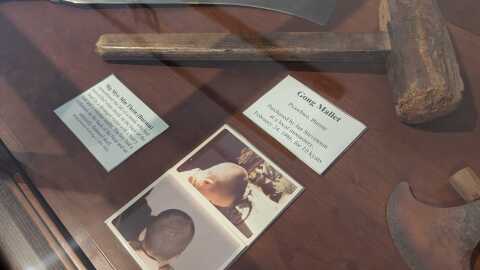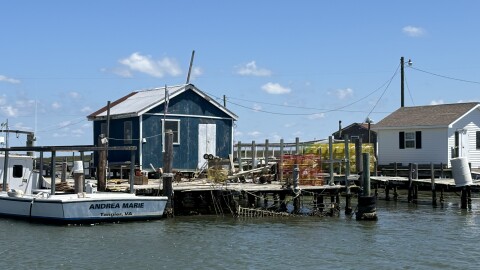Citizen science has previously spurred action by the Richmond government.
-
Groundhog Day is a “cross-quarter day” on the celestial calendar. Cross quarter days are mid-way points between the Solstices and Equinoxes. These days are associated with many familiar holidays whose astronomical roots have largely been forgotten.
-
For nearly 60 years, this office has explored the nature of consciousness.
-
Partner company hopes to have the project up and running by the 2030s.
-
A panel of experts could determine if “pattern of misconduct” occurred.
-
An ongoing review of a former state crime lab analyst’s work uncovered the error.
-
Former Science Museum of Virginia scientist captures Greek family recipes in new cookbook.
-
Early in life, the protein Reelin helps assemble the brain. Later on, it appears to protect the organ from Alzheimer's and other threats to memory and thinking.
-
Head of Harrison Family Translational Research Center discusses advances in treatment.
-
The island's lost two-thirds of its land mass since 1850 and climate change is making the problem worse.
-
Dr. Robert Winn says improved screening methods, vaccines could help wipe out the disease.
-
When is a bug a true bug? Find out with entomologist Dr. Art Evans and VPM radio producer Steve Clark as they delve into the characteristics, classification, and proper spelling of the common names of true bugs.
-
What is one of the first “creepy crawlies” that you remember from childhood? Roly-polies, also known as woodlice in Europe, are probably at the top of the list for many of us. But what is a roly-poly? Is it an insect or is it something else? Entomologist Dr. Art Evans and VPM radio producer Steve Clark explore the hidden lives of roly-polies and reveal how these moisture-loving animals survive on land.
-
Entomologist Dr. Art Evans and VPM radio producer Steve Clark discuss one of the most spectacular moths found in North America, the Luna moth. What makes this harbinger of spring and summer so compelling?
-
Anyone who has spent time outdoors during the summer has likely endured the painful bites of horse flies. Just the threat of attack by these notoriously persistent blood-suckers causes great anguish, not only in people, but also among domestic and wild animals alike. Join Entomologist Dr. Art Evans and VPM radio producer Steve Clark as they explore the fascinating natural history and habits of horse flies.
-
Sometimes topics for VPM’s “What’s Bugging You?” radio show were inspired by comments and suggestions from listeners. Case in point, a neighbor of Entomologist Dr. Art Evans shared a photo of a strange looking beetle resembling a crusty bit of mucus. Learn more about the unusual defense strategies employed by the clavate tortoise beetle, Plagiometriona clavata (Fabricius) with Dr. Evans and VPM radio producer Steve Clark.
-
In a mission to clean the Chesapeake Bay, Governor Ralph Northam is asking universities to play their part and help keep pollution out of Virginia’s waterways.
-
The nation’s largest temperature data collection project began this week. Students and faculty from thirteen Virginia colleges are attempting to better understand how extreme heat affects cities and their residents.
-
Richmond experienced extreme heat again last year, part of an ongoing warming trend that's causing more intense storms.
-
A new digital mapping project shows the impacts of environmental damage - like air pollution - on communities across the state. It may help state leaders to begin environmental justice initiatives and address disparate impacts.
-
Humans have caused some big changes on land, in the ocean, and even in the air. Some of those changes have impacted vast amounts of species including in here in the Southeastern part of the nation. Science and conservation are wonderful tools to help address some of those impacts. Many species have been wiped out, but with a little planning, work, and luck scientists are hoping to give some of these dwindling species a shot at a comeback.
























